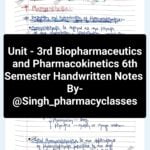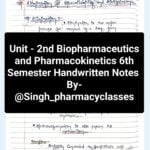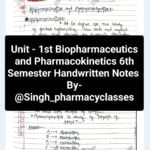Umang Shah
Ashok Akabari
Amit Kumar Baser
Ashish Patel
GPAT
‑‑‑
‑
‑‑‑‑
Complete Companion for GPAT and Other Entrance Examination in Pharmacy in
its Fifth edition, is a sincere attempt to produce comprehensive course material for the aspirants.
The book contains six units, where the first four units are covering major sections of pharmaceutics,
‑
pharmacology, pharmaceutical chemistry, and pharmacognosy. Unit five contains all important information
regarding NIPER JEE examination—syllabus, preparation guidelines, and five mock test papers particularly
designed for NIPER JEE inline with previous years’ examination. At the end, previous year papers from GPAT,
GPSC and UPSC have also been provided as unit six.
Each chapter of the book is supported with highlighted definitions, theoretical explanations with diagrams, tabular
data for effective run-through. Chapter-end exercises are graded from simple to moderate to difficult level as per
the current examination trend.
‑‑‑‑
GPAT
Updated as per latest examination pattern Also useful for various government
GPAT
Includes GPAT 2020 Question paper with solution Pharmacist, Drug Inspector and Assistant
Provides over 5000 practice questions for Professor Recruitment Examinations
Cover Image: Grinbox.shutterstock.com
quick revision All state Post Graduate Common Entrance
Incorporates previous years’ solved papers – Test (PGCET) examinations
GPAT, GPSC and UPSC examination’s Drug NIPER-JEE and Manipal University and
Inspector; government lecturer and other university PG admission entrance
pharmacist’s examinations examinations
‑
MRP Inclusive
of all Taxes `899.00 ‑‑‑
‑
Shah I Akabari
Baser I Patel
in.pearson.com
Umang Shah I Ashok Akabari
Amit Kumar Baser I Ashish Patel
About Pearson
Pearson is the world’s learning company, with presence across 70 countries
worldwide. Our unique insights and world-class expertise comes from a long history
of working closely with renowned teachers, authors and thought leaders, as a result
of which, we have emerged as the preferred choice for millions of teachers and
learners across the world.
We believe learning opens up opportunities, creates fulfilling careers and hence
better lives. We hence collaborate with the best of minds to deliver you class-leading
products, spread across the Higher Education and K12 spectrum.
Superior learning experience and improved outcomes are at the heart of everything
we do. This product is the result of one such effort.
Your feedback plays a critical role in the evolution of our products and you can
contact us – [email protected]. We look forward to it.
This page is intentionally left blank
‑
‑‑‑‑
GPAT
‑‑‑
‑
This page is intentionally left blank
‑
‑‑‑‑
GPAT
‑‑‑
‑
Umang Shah I Ashok Akabari
Amit Kumar Baser I Ashish Patel
Copyright © 2020 Pearson India Education Services Pvt. Ltd
Published by Pearson India Education Services Pvt. Ltd, CIN: U72200TN2005PTC057128.
No part of this eBook may be used or reproduced in any manner whatsoever without the publisher’s
prior written consent.
This eBook may or may not include all assets that were part of the print version. The publisher
reserves the right to remove any material in this eBook at any time.
ISBN 978-93-539-4624-1
eISBN 978-93-539-4776-7
Head Office: 15th Floor, Tower-B, World Trade Tower, Plot No. 1, Block-C, Sector 16,
Noida 201 301, Uttar Pradesh, India.
Registered Office: The HIVE, 3rd Floor, Pillaiyar Koil Street, Jawaharlal Nehru Road,
Anna Nagar, Chennai 600 040, Tamil Nadu, India.
Phone: 044-66540100
website: in.pearson.com, Email: [email protected]
Contents
Prefacexi
Syllabus for GPAT xii
About the Examination xxviii
Graduate Pharmacy Aptitude Test – 2020 xxix
UNIT 1: PHARMACEUTICS Formulation of Tablets 1.50
Capsule 1.65
Chapter 1 Physical Pharmaceutics 1.3
Parenterals 1.67
Micromeritics and Powder Rheology 1.3
Aerosols 1.72
Surface and Interfacial Phenomenon 1.9
Sterilization and Disinfectants 1.74
Rheology 1.13
Controlled Drug Delivery System 1.78
State of Matter 1.16
Chapter 4 Dispensing Pharmacy 1.93
Colloids 1.17
Pharmaceutical Calculation 1.93
Diffusion 1.19
Microencapsulation 1.96
Chapter 2 Pharmaceutical Engineering
(Unit Operation) 1.24 Liquid and Semisolid Dosage Forms 1.97
Size Reduction 1.24 Drug Incompatibility 1.102
Size Separation 1.25 Chapter 5 Biopharmaceutics 1.110
Drying 1.25 Absorption of Drug 1.110
Crystallization 1.29 Theories of Dissolution 1.111
Evaporation 1.30 Pharmacokinetic Models 1.116
Mixing 1.30 Physiologic Model 1.116
Filtration 1.31 Michaelis Menten Equation 1.123
Centrifugation 1.32 In-Vitro In-Vivo Correlation 1.126
Heat and Mass Transfer 1.33 Chapter 6 Jurisprudence 1.133
Distillation 1.33 Chapter 7 Cosmetics Preparation 1.142
Flow of Fluids 1.34 Cosmetics 1.142
Extraction 1.35 Chapter 8 Microbiology 1.152
Chapter 3 Pharmaceutical Technology and Modern Definitions 1.152
Pharmaceutics1.41 Chemical Nature of Immunogens 1.152
Preformulation 1.41 Immunoglobulins–Structure and
Tablet 1.49 Function1.153
viii Contents
Immunity 1.155 Antiviral Agents 2.59
Classification and Identification of Anti-Herpes Agent 2.60
Bacteria1.158 Chemotherapy of Cancer 2.61
Staining Methods in Microbiology 1.159 Chapter 6 Therapeutic Aspect of Inflammatory
Few Important Assay 1.160 Disorders2.72
Genetic Recombination in Bacteria 1.161 Non-Steroidal Anti-Inflammatory
Drugs and Antipyretic–Analgesics 2.72
Antibiotics—Microbial Assays 1.162
Drugs for Cough 2.73
Asthma 2.74
UNIT 2: PHARMACOLOGY Eicosanoids 2.75
Chapter 7 Drugs Acting on Cardio-Vascular
Chapter 1 Basic Pharmacology 2.3
System2.80
Pharmacology and Routes of
Anti Hypertensive Drugs 2.80
Administration2.3
Drugs used to treat CHF 2.81
Pharmacokinetics 2.4
Anti-Anginal Drugs 2.83
Pharmacodynamics 2.6
Anti-Arrhythmic Agent 2.84
Chapter 2 Autonomic Nervous System 2.11
Drugs Affecting Coagulation,
Antiadrenergic Drugs 2.17 Bleeding time and Thrombosis 2.87
Chapter 3 Endocrine Pharmacology 2.23 Agents used in Hyperlipidemia 2.90
Anterior Pituitary Hormones 2.23 Diuretics 2.91
Oxytocin and Drug Acting on Uterus 2.25 Chapter 8 Drugs for Gastrointestinal Tract
Thyroid and Parathyroid Hormones 2.25 Disorder2.101
Oral Hypoglycaemics 2.28 Drugs for Peptic Ulcer 2.101
Chapter 4 Central Nervous System 2.34 Emetics and Antiemetics 2.102
Chapter 9 Pharmacological Drugs
Sedative Hypnotics 2.34
Classification2.106
Antiepileptic Drugs 2.35
Drugs Acting at Autonomic Nervous
Antiepileptic Drugs 2.36 System2.106
Anti Parkinson’s Drugs 2.37 Cardio-Vascular Drugs 2.106
Chapter 5 Chemotherapy and Chemotherapy Diuretics 2.107
of Cancer 2.46 Histamine, Serotonin and Ergot
Beta Lactam Antibiotics 2.46 Alkaloids2.107
Chloramphenicol 2.48 Vasoactive Peptide 2.107
Tetracycline 2.48 Prostaglandins and Eicosanoids 2.107
Aminoglycoside Antibiotics 2.49 Anti-asthmatic Drugs 2.107
Macrolides and others Antibiotics 2.49 Drugs Acting at CNS 2.107
Other Antibiotics 2.50 Drugs Acting on Blood, Inflammation
Sulfonamides 2.51 and Gout 2.109
Antitubercular Drugs 2.52 Endocrine Drugs 2.109
Antileprotic Drugs 2.53 Chemotherapy 2.110
Antifungal Drugs 2.54 Anti Cancer Drugs 2.112
Antihelmintics 2.55 Immunosuppresants 2.112
Anti Amoebic and other Antiprotozoal Immunostimulators 2.112
Drugs2.58 Drugs used in Gastrointestinal
Drug for Leishmaniasis 2.59 Disorders2.112
Contents ix
UNIT 3: PHARMACEUTICAL Terpenoids 4.8
CHEMISTRY Plant hormone 4.8
Enzymes 4.16
Chapter 1 Physical Chemistry 3.3
Papain 4.16
Thermodynamic and Energetics 3.3 Bromelain 4.16
Kinetics of a Reaction 3.6 Malt Extract 4.17
Kinetic Theory of Gases and Solution Streptokinase 4.17
Chemistry3.9 Urokinase 4.17
Methods of Expressing the Concentration Hyaluronidase 4.17
of a Solution 3.13
Serratiopeptidase 4.18
Electrochemistry 3.16 Gelatin 4.18
Acid-Base and Ionic Equilibrium 3.18 Chapter 2 Drug Containing Alkaloids 4.23
Radioactivity 3.22 Alkaloidal Drugs Description 4.23
Chapter 2 Organic Chemistry 3.27 Chapter 3 Drug Containing Glycosides 4.33
Atomic Structure 3.27 Glycosides Drugs Description 4.33
Chapter 3 Analytical Chemistry 3.90 Microscopy and Adulteration of
Pharmaceutical Analysis 3.90 Glycosides4.36
Chapter 4 Biochemistry 3.150 Chapter 4 Drug Containing Terpenoids 4.45
Carbohydrates 3.150 Terpenoid Drugs Description 4.45
Important Biochemistry Pathway Microscopy and Adulteration
(Cycle)3.166 of Terpenoids 4.47
Chapter 5 Medicinal Chemistry 3.188 Chapter 5 Drug Containing Carbohydrate,
Drugs Acting on ANS 3.188 Resin and Tannin 4.55
Chemotherapy 3.219 Drug Containing Carbohydrate 4.55
Cephalosporin 3.222 Drug Containing Resin 4.57
Macrolide Antibiotics 3.222 Tannin 4.59
Chloramphenicol 3.223
Aminoglycoside 3.224 UNIT 5: NIPER Special
Steroids 3.240
NIPER – Seats Matrix 5.3
Chapter 6 Inorganic Chemistry 3.279
Master Programme for 2016–2017 5.3
Topical Preparation 3.279
NIPER JEE – Examination Syllabus 5.6
Inorganic Gases 3.280
NIPER Special 5.11
Gastro Intestine Agents 3.281
Isosteres 5.11
Protective and Adsorbents 3.281
Therma Method of Analysis 5.14
Saline Cathartics 3.281
Instrument 5.14
Acid Base and Buffers 3.282
Major Regulatory Agencies World Wide 5.27
Miscellaneous Agent 3.283
NIPER JEE – Question Paper I 5.40
NIPER JEE – Question Paper II 5.46
UNIT 4: PHARMACOGNOSY NIPER JEE – Question Paper III 5.52
Chapter 1 Introduction to Pharmacognosy 4.3 NIPER JEE – Question Paper IV 5.58
Alkaloids 4.3 NIPER JEE – Question Paper V 5.64
Glycosides 4.7 Some Tips for Preparation of NIPER JEE and GPAT 5.70
x Contents
UNIT 6: Previous Years’ Solved Part 2
Papers
1. L. M. College of Pharmacy, Gujarat (Government
Part 1 of Gujarat) Assistant Professor Recruitment
Examination Question Paper 2016 6.50
- Graduate Pharmacy Aptitude Test – 2019 6.4 2. ESIC Pharmacist (Employees State Insurance
- Graduate Pharmacy Aptitude Test – 2018 6.13 Corporation -Allopathic) Recruitment Question
- Graduate Pharmacy Aptitude Test – 2017 6.23 Paper 2016 6.56
- Graduate Pharmacy Aptitude Test – 2012 6.33 3. UPSC Drug Inspector Examination Paper 2011 6.62
4. Gujarat Government Lecturer Examination
in Degree/Diploma Pharmacy College-Gpsc
20106.71
- Gujarat Drug Inspector Exam Paper—GPSC 2010 6.77
Preface
The Graduate Pharmacy Aptitude Test (GPAT) is an online national level entrance examination for admission into all post
graduate pharmacy programs conducted by National Testing Agency (NTA) since 2018. NTA is an autonomous and self-
sustained premier testing organization for major entrance examinations in higher educational institutions. [Earlier GPAT
was approved and conducted by the All India Council for Technical Education (AICTE)].
This examination is usually conducted annually for admission to the postgraduate courses in the affiliated institutes
of AICTE and University Grants Commission (UGC). The GPAT score is also recommended for appearing in the
National Institute of Pharmaceutical Education and Research (NIPER) examination and Ph.D. Programmes in various
universities.
Complete Companion for GPAT and Other Entrance Examination in Pharmacy in its fifth edition, is a sincere
accomplishment to produce comprehensive course material for the aspirants. The book contains six units, where the first
four units are covering major sections of pharmaceutics, pharmacology, pharmaceutical chemistry, and pharma cognosy.
Unit five contains all important information regarding NIPER JEE examination—syllabus, preparation guidelines, and five
mock test papers particularly designed for NIPER JEE in line with previous years’ examination. All previous years’ solved
papers from GPAT, GPSC and UPSC examination’s Drug Inspector; government lecturer and pharmacist’s examination are
included in unit six. GPAT 2020 solved question papers are included in front matter of the book. Five updated mock-tests
have been uploaded online (https://www.pearsoned.co.in/UmangHShah/) for further practice. Each chapter of the book
is supported with highlighted definitions, theoretical explanations with diagrams, tabular data for effective preparations.
Chapter-end exercises are graded from simple to moderate to difficult as per the previous years’ questions from GPAT,
GATE, and NIPER JEE.
This book is also useful for various entrance examinations such as Gujarat Public Service Commission (GPSC),
Maharashtra CET (MHCET); Manipal University, and Union Public Service Commission (UPSC) examinations for Drug
Inspector; government lectureship.
We hope this book will help students understand the concepts and enable them to solve maximum questions in
minimum time.
Finally, we wish all the very best to every student preparing for the GPAT examination.
Umang Shah
Ashok Akabari
Amit Baser
Ashish Patel
Syllabus for GPAT
PHARMACEUTICS
Introduction to physical pharmacy Refer Unit 1: Chapter 1
- Matter, Properties of Matter:
State of matter, change in the state of matter, latent heats and vapor pressure, sublimation critical point, eutectic
mixtures, gases, aerosols-inhalers, relative humidity, liquid. Complexes, liquid crystals, glassy state, solids- crystalline,
amorphous and polymorphism.
- Micromeretics and Powder Rheology:
Particle size and distribution, average particle size, number and weight distribution, particle number, methods for
determining particle volume, methods of determining particle size- optical microscopy, sieving, sedimentation;
measurements of particle shape, specific surface area; methods for determining surface area; permeability, adsorption,
derived properties of powders, porosity, packing arrangement, densities, bulkiness & flow properties.
- Surface and Interfacial Phenomenon:
Liquid interface, surface and interfacial tensions, surface free energy, measurement of surface and interfacial tensions,
spreading coefficient, adsorption at liquid interfaces, surface active agents, HLB classification, solubilization,
detergency, adsorption at solid interfaces, solid-gas and solid- liquid interfaces, complex films, electrical properties of
interface.
- Viscosity and Rheology:
Newtonian systems, Law of flow, kinematic viscosity, effect of temperature; non-newtonian systems: pseudoplastic,
dilatant, plastic; thixotropy, thixotropy in formulation, negative thixotropy, determination of viscosity, capillary, falling
ball, rotational viscometers.
- Dispersion Systems:
Colloidal dispersions: Definition, types, properties of colloids, protective colloids, applications of colloids in
pharmacy; Suspensions and Emulsions: Interfacial properties of suspended particles, settling in suspensions, theory of
sedimentation, effect of Brownian motion, sedimentation of flocculated particles, sedimentation parameters, wetting
of particles, controlled flocculation, flocculation in structured vehicles, rheological considerations; Emulsions-types,
theories, physical stability.
- Complexation:
Classification of complexes, methods of preparation, analysis, & applications.
- Kinetics and Drug Stability:
General considerations & concepts, half-life determination, Influence of temperature, light, solvent, catalytic species
and other factors, Accelerated stability study, expiration dating.
Syllabus for GPAT xiii
Importance of microbiology in pharmacy Refer Unit 1: Chapter 8
- Structure of Bacterial Cell; Classification of microbes and their taxonomy:
Actinomycetes, bacteria, rickettsiae, spirochetes and viruses.
- Identification of Microbes:
Stains and types of staining techniques, electron microscopy; Nutrition, cultivation, isolation of bacteria, actinomycetes,
fungi, viruses, etc; microbial genetics and variation.
- Control of Microbes by Physical and Chemical Methods:
Disinfection, factors influencing disinfectants, dynamics of disinfection, disinfectants and antiseptics and their
evaluation.
- Sterilization:
Different methods, validation of sterilization methods &equipments; Sterility testing of all pharmaceutical products.
Microbial assays of antibiotics, vitamins & amino acids.
- Immunology and Immunological Preparations:
Principles, antigens and heptans, immune system, cellular/humoral immunity, immunological tolerance, antigen-
antibody reactions and their applications. Hypersensitivity, active and passive immunization. Vaccines and sera: their
preparation, standardization and storage.
- Genetic Recombination:
Transformation, conjugation, transduction, protoplast fusion and gene cloning and their applications. Development
of hybridoma for monoclonal antibodies. Study of drugs produced by biotechnology such as Activase, Humulin,
Humatrope, HB etc.
- Antibiotics:
Historical development of antibiotics. Antimicrobial spectrum and methods used for their standardization. Screening
of soil for organisms producing antibiotics, fermenter, its design, control of different parameters. Isolation of mutants,
factors influencing rate of mutation. Design of fermentation process. Isolation of fermentation products with special
reference to penicillins, streptomycins, tetracyclines and vitamin B12.
Introduction to pharmaceutical jurisprudence & ethics Refer Unit 1: Chapter 6
- Pharmaceutical Legislations:
A brief review; Drugs & Pharmaceutical Industry – A brief review; Pharmaceutical Education
- An Elaborate Study of the Followings:
Pharmaceutical Ethics; Pharmacy Act 1948; Drugs and Cosmetics Act 1940 and Rules 1945; Medicinal & Toilet
Preparations (Excise Duties) Act 1955; Narcotic Drugs & Psychotropic Substances Act 1985 & Rules; Drugs Price
Control Order.
- A Brief Study of the Following Acts with Special Reference to the Main Provisions and the Latest Amendments:
Poisons Act 1919; Drugs and Magic Remedies (Objectionable Advertisements) Act 1954; Medical Termination of
Pregnancy Act 1970 & Rules 1975; Prevention of Cruelty to Animals Act 1960; States Shops & Establishments Act &
Rules; Insecticides Act 1968; AICTE Act 1987; Factories Act 1948; Minimum Wages Act 1948; Patents Act 1970.
A brief study of the various Prescription/Non-prescription Products. Medical/Surgical accessories, diagnostic aids,
appliances available in the market.
Introduction to dispensing and community pharmacy Refer Unit 1: Chapter 4
- Prescription:
Handling of prescription, source of errors in prescription, care required in dispensing procedures including labeling
of dispensed products. General dispensing procedures including labeling of dispensed products; Pharmaceutical
xiv Syllabus for GPAT
calculations: Posology, calculation of doses for infants, adults and elderly patients; Enlarging and reducing recipes
percentage solutions, alligation, alcohol dilution, proof spirit, isotonic solutions, displacement value etc.
- Principles Involved and Procedures Adopted in Dispensing of:
Typical prescriptions like mixtures, solutions, emulsions, creams, ointments, powders, capsules, pastes, jellies,
suppositories, ophthalmic, pastilles, lozenges, pills, lotions, liniments, inhalations, paints, sprays, tablet triturates, etc.
- Incompatibilities:
Physical and chemical incompatibilities, inorganic incompatibilities including incompatibilities of metals and their
salts, non-metals, acids, alkalis, organic incompatibilities. Purine bases, alkaloids, pyrazolone derivatives, amino acids,
quaternary ammonium compounds, carbohydrates, glycosides, anesthetics, dyes, surface active agents, correction of
incompatibilities. Therapeutic incompatibilities.
- Community Pharmacy:
Organization and structure of retail and whole sale drug store-types of drug store and design, legal requirements for
establishment, maintenance and drug store-dispensing of proprietary products, maintenance of records of retail and
wholesale, patient counseling, role of pharmacist in community health care and education (First aid, communicable
diseases, nutrition, family planning).
- Organization and Structure of Hospital Pharmacy:
Organization of a hospital and hospital pharmacy, Responsibilities of a hospital pharmacist, Pharmacy and therapeutic
committee, Budget preparation and Implementation.
- Hospital Formulary:
Contents, preparation and revision of hospital formulary.
- Drug Store Management and Inventory Control:
Organization of drug store, Types of materials stocked, storage conditions; Purchase and Inventory Control principles,
purchase procedures, Purchase order, Procurement and stocking.
- Drug Distribution Systems in Hospitals:
Out-patient dispensing, methods adopted; Dispensing of drugs to in-patients. Types of drug distribution systems.
Charging policy, labeling; Dispensing of drugs to ambulatory patients; Dispensing of controlled drugs, Dispensing of
ancillary supplies.
- Central Sterile Supply Unit and their Management:
Types of materials for sterilization, Packing of materials prior to sterilization, sterilization equipments, Supply of
sterile materials.
- Manufacture of Sterile and Non-sterile Products:
Policy making of manufacturable items, demand and costing, personnel requirements, manufacturing practice, Master
formula Card, production control, Manufacturing records.
- Drug Information Services:
Sources’ of Information on drugs, disease, treatment schedules, procurement of information, Computerized services
(e.g., MEDLINE), Retrieval of information, Medication error- types of medication errors, correction and reporting.
- Records and Reports:
Prescription filling, drug profile, patient medication profile, cases on drug interaction and adverse reactions, idiosyncratic
cases. Pharmacoeconomics: Introduction to pharmacoeconomics, different methods of pharmacoeconomics,
application of pharmacoeconomics.
- Pharmacoepidemiology:
Definition and scope, method to conduct pharmacoepidemiological studies, advantages & disadvantages of
pharmacoepidemiological studies.
- Nuclear Pharmacy:
Methods of handling radioisotopes, radioisotope committee.
S yllabus for GPAT xv










